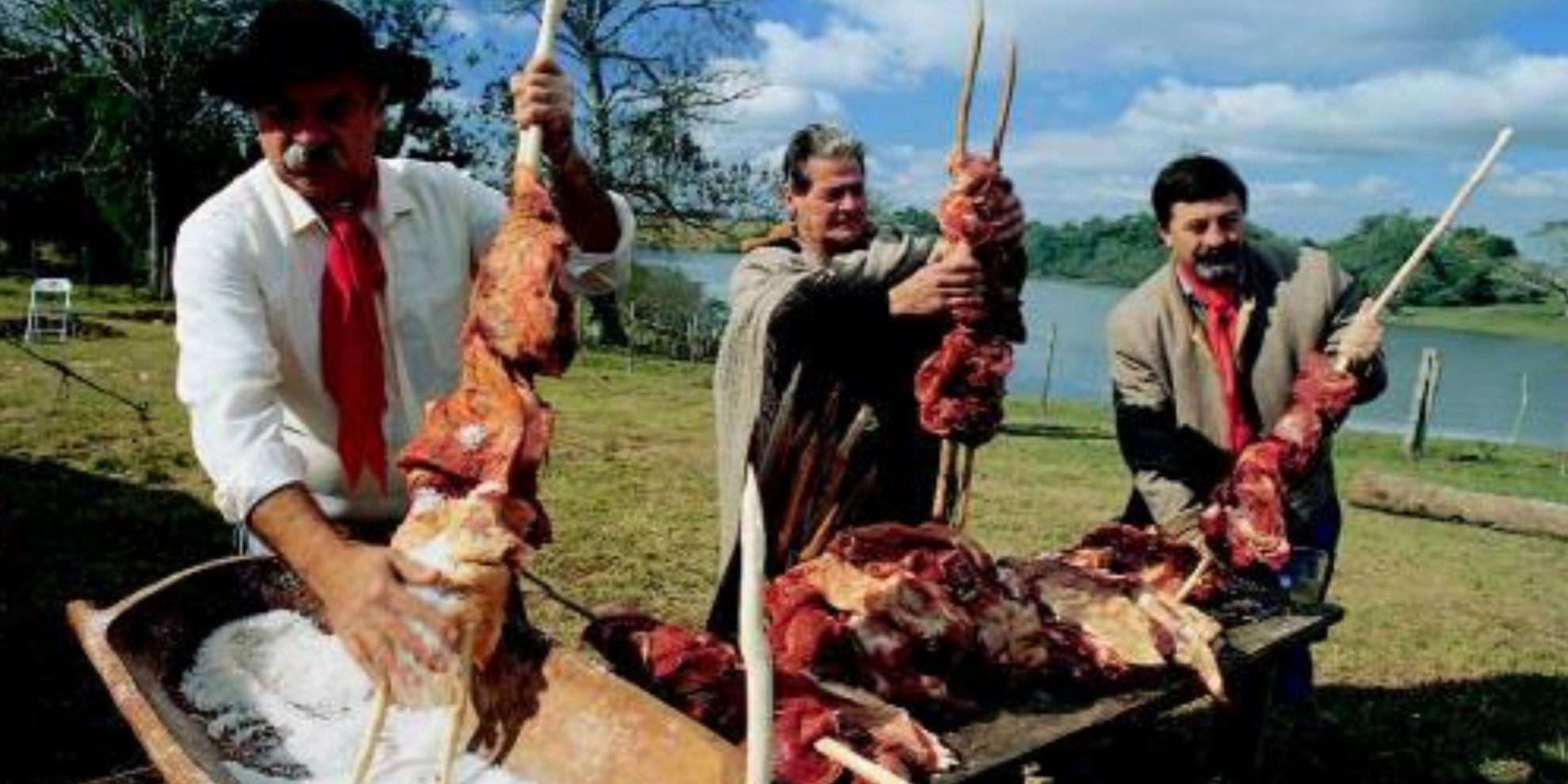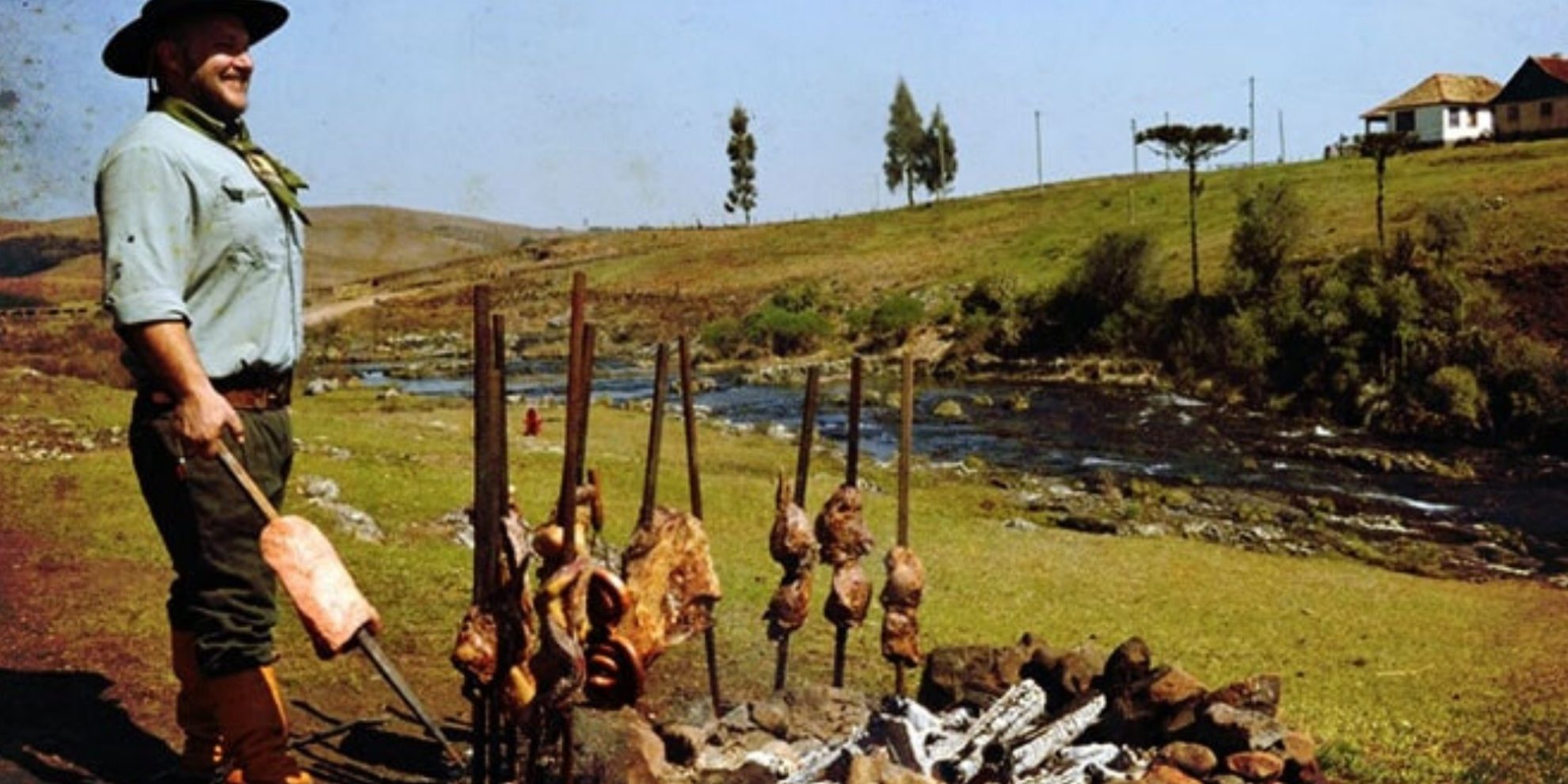Our Story
The Origin of Brazilian Barbecue
The beginning of Brazilian barbecue can be traced back to the 1700s during Brazil’s colonization by European settlers.
The subsequent rise in popularity of the Churrasco technique is credited to Gaúchos in the cattle ranching lands of the Rio Grande do Sul in the 1800s.
After long days of herding cattle, the Gaúchos would gather their communities to enjoy a large meal of barbecue meats they called Churrasco.
In the traditional method for preparing Churrasco, Gaúchos would dig large pits in the ground and begin a fire. They would then wait for the wood to turn to embers to skewer the meat. The meat was traditionally seasoned with coarse salt and would sit for 30 minutes slowly roasting over the glowing embers. Later techniques involved basting the beef with salt water to keep the meat moist during cooking. While the men prepared the meat, women, and children traditionally gathered ingredients from their gardens and prepared side dishes for their meals.


The Cuts of Churrasco Meat
In many modern Churrascarias, the seasoning and cuts of Churrasco meat have stayed true to the cuisine’s cowboy roots. While the primary offering at many Churrascarias remains red meat seasoned only with a generous helping of salt before being grilled, Churrasco now incorporates fish, poultry and lamb.
What is most important is that the meat is high quality and high in fat so it can also baste as it roasts. There signature array’s of beef cuts available at modern Churrascarias, include:
- Picanha: top sirloin folded into a C-shape with a garlic or sea salt crust
- Fraldinha: characterized by its long, flat shape, strong marbling and cut against the grain
- Filet mignon: delicate and tender beef either grilled plain, wrapped in bacon or crusted in Parmesan
- Chuleta: whole cuts of ribeye steak which are skewered and grilled
Unlike the traditionally sparse seasoning that accompanies beef, poultry, and lamb, ours is spiced with a marinade the night before.
The Brazilian Steakhouse Dining Experience
Modern Brazilian steakhouses use Churrasco grills with places for skewers to be laid out over a fire. Fattier items are usually placed on top, which allows the juices to drip and flavor the other cuts of meat. Once they’re cooked, waiters bring the skewers to guests, carving off large pieces onto their plates.
Often, diners at these Rodízio Steakhouses pay a fixed price and enjoy an all-you-can-eat-style meal. Diners are given color cards to indicate whether they would like more food. Green means they have room for more, while red signals they can’t handle another bite.


Churrasco: A Way of Life
Brazilians continue to celebrate and perfect their ancestors’ style of cooking. Since the 1940’s, tens of thousands of people have left the Taquari Valley and the country’s barbecue capital – the city of Nova Bréscia – to open their own barbecue restaurants across Brazil and the globe.
Nova Bréscia especially cherishes its history of churrasco. In the city’s central plaza stands the statue of a man cooking barbecue.
The Gaúcho culture and traditions are still celebrated annually in southern Brazil during Farroupilha Week in Rio Grande do Sul.
We pride ourselves on keeping this authentic way of life alive. You will taste it in our meats, authentic Brazilian sides and an exemplary dining experience, like no other.
Monday
CLOSED
Tuesday – Saturday:
LUNCH
11:00am to 2:30 pm
DINNER
Tuesday-Thursday 5:00pm-9:00pm
Friday-Saturday
5:00pm-10:00pm
Sunday 4:00pm-9:00pm
FRI & SAT
Lunch
11:00am – 2:30pm
Dinner
5:00pm – 9:30pm
Sundays
4:00pm – 9:00pm
EASTER SUNDAY
2PM – 9PM
